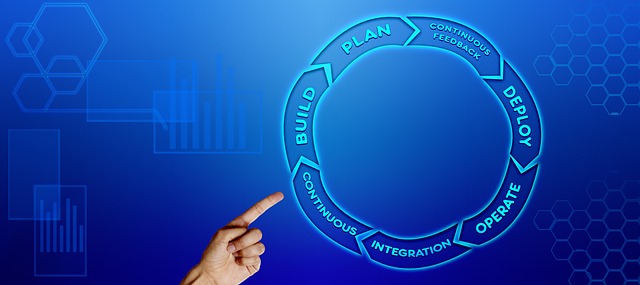
Robotics Platform Software Enhances Automation in Modern IT
Modern information technology environments are evolving at an unprecedented pace. The sheer volume of data, the frequency of deployments, and the complexity of network topologies demand solutions that can operate with speed, precision, and minimal human intervention. Robotics platform software has emerged as a transformative force, bringing robotic process automation (RPA), intelligent agents, and autonomous workflows into the core of IT operations. Rather than being a niche tool, this technology is now integral to the architecture of agile, resilient, and scalable digital infrastructures.
What Is Robotics Platform Software?
At its essence, robotics platform software is a suite of tools that enables the creation, orchestration, and management of software robots—digital entities that perform tasks automatically. These robots can mimic human interactions with systems, interpret unstructured data, and make decisions based on predefined rules or machine learning models. The platform typically includes a visual designer for building workflows, a runtime engine for executing tasks, monitoring dashboards, and APIs for integration with existing IT services.
- Visual workflow authoring for rapid deployment.
- Intelligent decision engines that learn from data.
- Robust monitoring and audit trails.
- Seamless integration with cloud, on‑premises, and hybrid environments.
Key Capabilities That Drive Automation
The power of robotics platform software lies in its blend of deterministic scripting and adaptive intelligence. This combination allows IT teams to:
“Move from rule‑based automation to intelligent orchestration, reducing manual touchpoints by up to 70% in critical processes.”
- Process Discovery: Automated scanning of systems to identify repetitive tasks suitable for automation.
- Intelligent Data Extraction: Optical character recognition (OCR) and natural language processing (NLP) to ingest information from PDFs, emails, and logs.
- Orchestration Engine: Coordinated execution of multiple robots across diverse platforms.
- Compliance & Security: Built‑in controls for role‑based access, encryption, and audit logging.
Seamless Integration With Existing IT Ecosystems
One of the most critical challenges in adopting robotics platform software is ensuring it works harmoniously with legacy systems and modern cloud services. Modern platforms provide:
- API connectors for service‑based architectures.
- Native support for popular configuration management tools such as Ansible and Terraform.
- Event‑driven triggers that respond to infrastructure changes or user requests.
By leveraging these connectors, organizations can embed automation into their incident management, patch deployment, and user provisioning workflows without disrupting existing operations.
Impact on IT Operations and Service Delivery
Robotics platform software reshapes the way IT departments operate. Below are the primary benefits:
- Speed & Efficiency: Routine tasks such as software installs, configuration updates, and system health checks can be completed in seconds, freeing human talent for higher‑value work.
- Consistency & Accuracy: Automated workflows eliminate the variance introduced by manual processes, leading to fewer errors and improved compliance.
- Scalability: Robots can be replicated across data centers and cloud regions with minimal overhead, enabling organizations to scale operations without proportionally increasing staffing.
- Predictive Maintenance: By continuously monitoring logs and performance metrics, robots can trigger preemptive actions that reduce downtime.
These advantages collectively translate into cost savings, higher service levels, and a more resilient IT foundation.
Real‑World Deployment Scenarios
Below are illustrative use cases that showcase the versatility of robotics platform software in an IT context:
- Automated Onboarding: When a new developer joins, the robot provisions virtual machines, configures access rights, and populates the developer portal—all within minutes.
- Incident Response: Upon detection of a security breach, a robot isolates affected servers, rolls back configurations, and initiates forensic analysis, reducing containment time.
- Change Management: Robots validate change requests against compliance policies, schedule deployments during low‑impact windows, and automatically roll back if failures are detected.
- Capacity Planning: By analyzing usage trends, robots recommend scaling actions, such as adding new nodes or reallocating workloads, and automate the provisioning process.
Addressing Implementation Challenges
Despite its benefits, adopting robotics platform software is not without hurdles. Key challenges include:
- Skill Gap: Developing complex robotic workflows requires knowledge of both programming and IT operations. Upskilling teams or hiring specialized talent can mitigate this.
- Change Management: Introducing robots can disrupt established routines. Clear communication, phased rollouts, and stakeholder involvement are essential.
- Governance: Ensuring robots comply with regulatory requirements demands robust monitoring and audit capabilities.
- Security Concerns: Robots need access to sensitive data and systems. Implementing least‑privilege principles, encryption, and secure authentication mechanisms is critical.
Organizations that tackle these challenges systematically often achieve higher ROI and smoother integration.
Future Outlook: From Automation to Autonomous IT
As artificial intelligence matures, robotics platform software is poised to transition from rule‑based automation to truly autonomous IT operations. Emerging trends include:
- Self‑healing infrastructure where robots detect anomalies and automatically remediate issues without human intervention.
- Predictive analytics that forecast infrastructure needs months in advance, enabling proactive scaling.
- Collaborative robots that integrate with human workflows, offering suggestions and learning from user feedback.
- Unified governance frameworks that provide end‑to‑end visibility across all robotic processes.
These developments will further reduce operational costs, enhance system reliability, and unlock new business opportunities.
Conclusion
Robotics platform software is reshaping how modern IT departments approach automation, governance, and service delivery. By marrying deterministic workflows with intelligent decision‑making, it empowers organizations to accelerate deployment cycles, reduce errors, and scale operations efficiently. While implementation challenges exist, the strategic benefits—speed, consistency, scalability, and resilience—make it an indispensable tool in the digital transformation toolkit. As technology continues to evolve, the line between human‑led and robot‑led IT will blur, ushering in an era of autonomous, self‑optimizing infrastructures.


